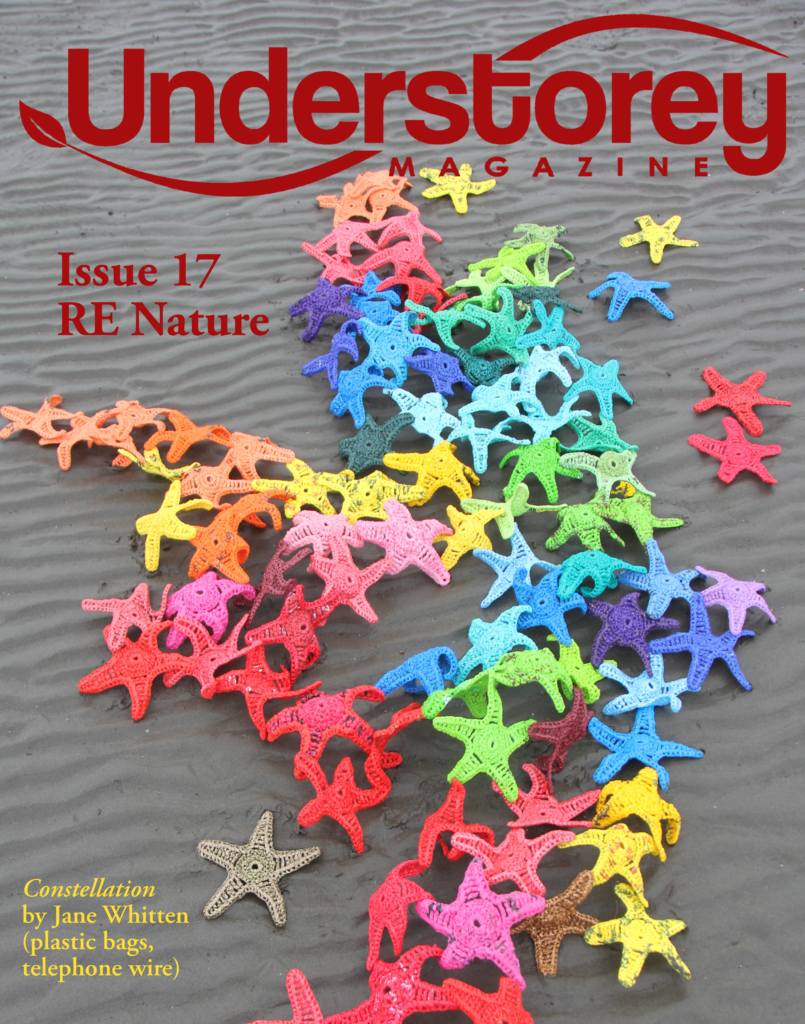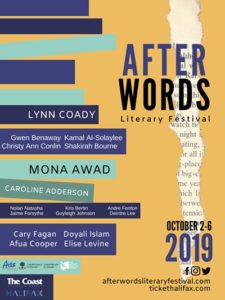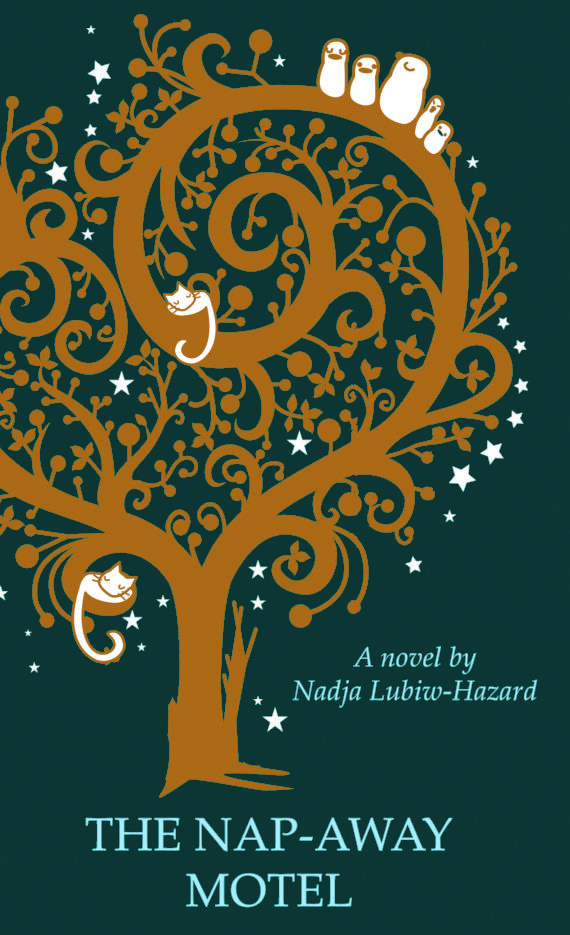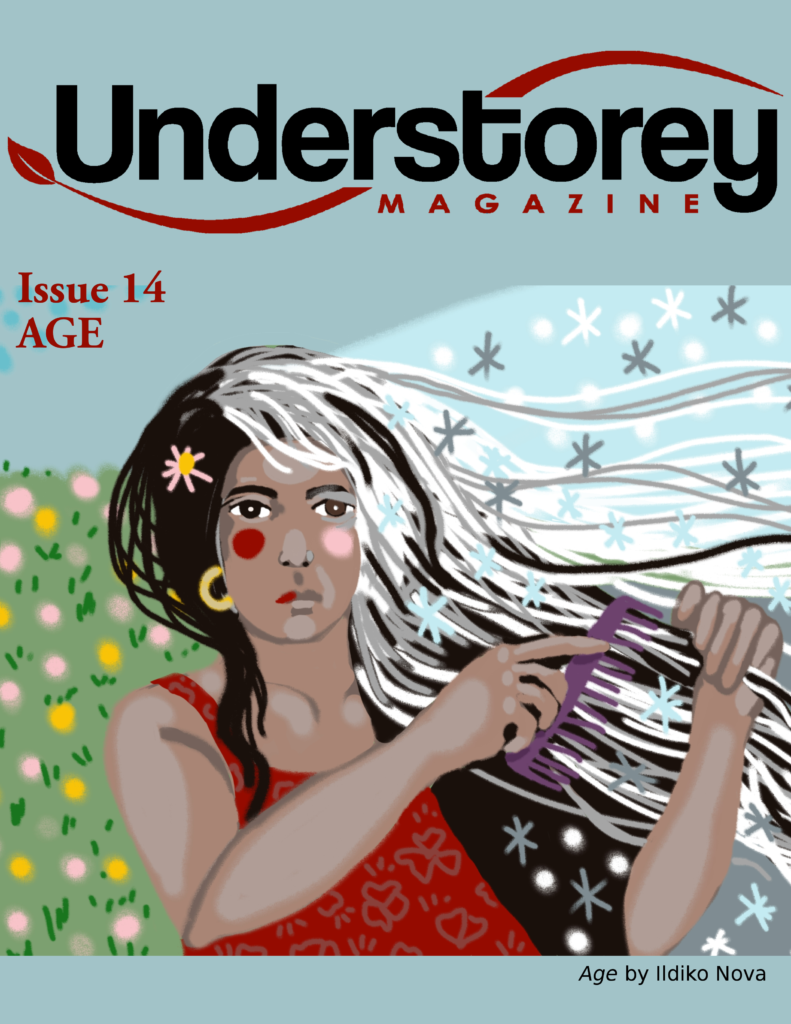RE Nature: Concerning nature.
Renature: To restore to original condition.
We began plans for this issue of Understorey Magazine over a year ago, in August and September of 2018. It seems like a long time has passed.
At that time, few people knew of Greta Thunberg, fewer had attended a Climate Strike. Extinction Rebellion did not exist. The IPCC had yet to release their game-changing report, the one that warned we had only twelve years to take serious action against climate change.
In the past year, it seems, our awareness has transformed. Even our language has changed. It is now commonplace to talk of the “climate crisis” or the “climate emergency.”
But while global awareness has recently surged, the situation itself—warming, melting, acidification—is not new at all. Half a century ago, back in the 1970s, Exxon (and probably others) accurately predicted and then actively buried the fact that burning fossil fuels would rapidly warm the planet. A quarter of a century ago, in 1992, nations met in Rio to sign the UN Framework Convention on Climate Change. The goal was to limit “dangerous anthropogenic interference” with the climate. And decades ago, Indigenous people, especially those in the Arctic, sounded the alarm, told us we are not doing enough. They have been living in a changed climate ever since.
The climate crisis has been called a “long emergency.” But things are speeding up—and it’s not just the climate we have to worry about. The UN has also issued dire, unprecedented warnings about species extinction. Some researchers say there are in fact nine planetary limits or boundaries; global temperature and species extinction only two of them. They say we have already transgressed four of those boundaries. Without a radical change of direction, and soon, we will not survive as a species.
So….
Why write poetry? Why write fiction or memoir? Why take time to paint or weave or sketch? Even for one morning, why ponder stories when so much is at stake?
A guiding principle of Understorey Magazine is that stories inspire change. Unearthing stories that are not often or not widely shared can build bonds, strengthen community, fuel action. This is why, for 17 issues now, we have chosen themes that are vital to our everyday lives but tend to stay hidden under the surface of everyday conversation: age, blood, service, motherhood, and more. In telling these stories, we announce: This has happened. This is happening—to me, to us. Stories help move us forward, they urge the question: Now what?
But as author and environmental journalist Linda Pannozzo recently reminded me, both through her writing and in person, stories can also blind us. Told over and over, stories can mire us in “truths” that were never truths, ideas that never made any sense at all. Patriarchy, for instance. Or more generally, dominion. Terra nullius. Nature’s bounty. Limitless economic growth. Whose stories are these? How are they sustained? What happens if we erase them and tell something new?
In his essential book, The Truth about Stories, Thomas King says: “The truth about stories is that that’s all we are.” Think about this for a moment. We are the stories we tell. We become the stories we tell.
In this issue of Understorey Magazine, our contributors do not lord over nature’s bounty. Nor do they stand aside in reverence or awe. They do not separate themselves at all—from nature, or from a nature in crisis. “We are accomplices,” writes Anna Quon, capturing in three words an alternate and necessary story.
Mi’kmaw author Tiffany Morris asks about specific words and definitions: “there is not a word in every language for / extinction event,” she writes. What does it mean that the English-speaking colonial world now requires this term?
Many of our contributors look at the storytellers themselves. “Auteur theory is for the birds,” writes Tanis MacDonald, forcing us to question who is penning the stories we tell of nature. Who believes they are directing the plot? And what about those relegated to the wings? Those who are homeless, endangered, living precariously, already suffering, or already lost? How will their stories shape who we are as a society and a species?
Of course, we have to do more than sit and write. We also have to rally crowds, get our hands dirty, listen to the too-busy and the still-doubtful. And, yes, we must pause to acknowledge the absolute wonder and our place in it. But creating a new narrative requires brave new storytellers, as well as a place to tell their stories.
So we invite you to read, think, comment, share, and act—RE Nature.
Thank you to all of our writers and visual artists, and to all who submitted work. We could not publish everything but we appreciated and learned from everything we read. Special thanks to our poetry editor, Rachel Edmonds, who vetted submissions and provided editorial comments, all while undergoing chemotherapy and planning a wedding. And a big thank you to our cover artist, Jane Whitten. Jane creates woven art with non-traditional but sadly abundant materials such as discarded plastic bags, telephone wire, and fishing line. The resulting portrayal of natural beauty and nature in crisis suggests not only where we now stand in the world, but several possible future stories.

 In the few weeks it has taken me to read and review Rising Tides: Reflections for Climate Changing Times (Caitlin Press, 2019), the world has all but forgotten the climate crisis. It is March 2020. Headline stories of wildfires and floods have slipped to the bottom of news websites or disappeared completely. We are consumed by another—seemingly separate—crisis: COVID-19.
In the few weeks it has taken me to read and review Rising Tides: Reflections for Climate Changing Times (Caitlin Press, 2019), the world has all but forgotten the climate crisis. It is March 2020. Headline stories of wildfires and floods have slipped to the bottom of news websites or disappeared completely. We are consumed by another—seemingly separate—crisis: COVID-19.




